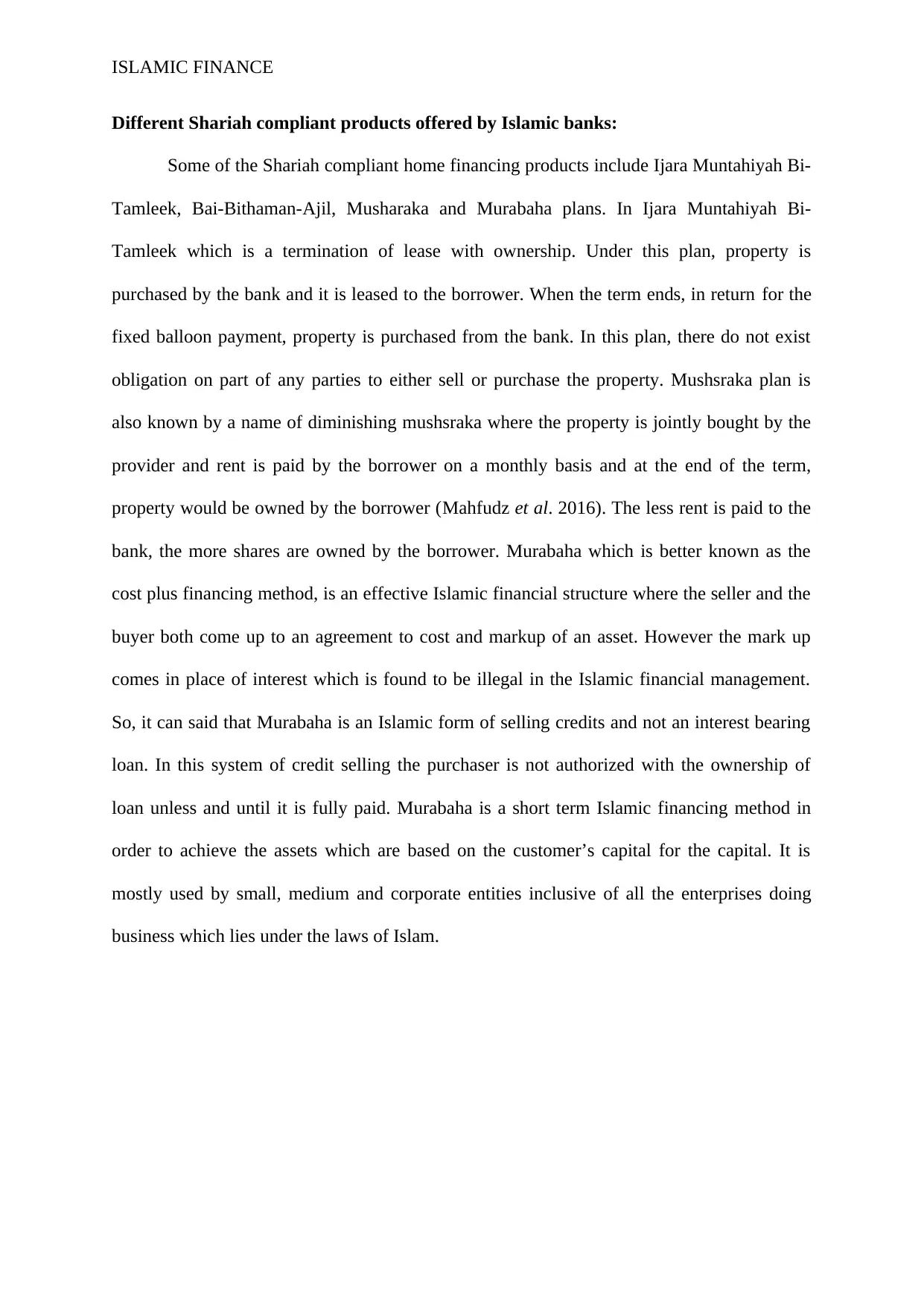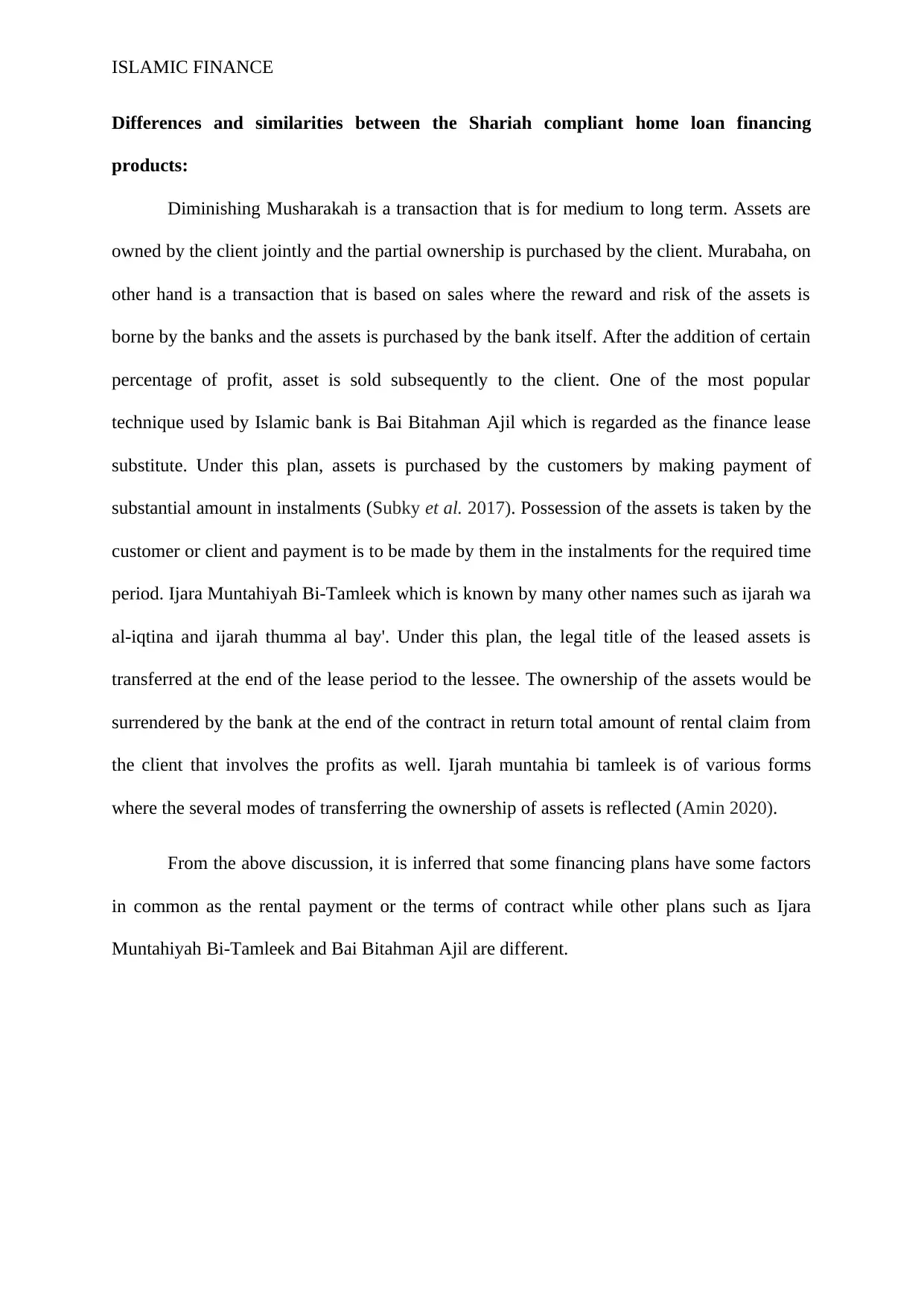Islamic Finance Products: Comparing Home Financing Options - FIN 370
VerifiedAdded on 2022/08/31
|4
|831
|26
Report
AI Summary
This report provides an overview of Shariah-compliant home financing products offered by Islamic banks. It details various plans such as Ijara Muntahiyah Bi-Tamleek, Bai-Bithaman-Ajil, Musharaka, and Murabaha, explaining their mechanisms and applications. The report highlights the key differences and similarities between these financing options, offering a comparative analysis of their structures and terms. Specifically, it describes how Ijara Muntahiyah Bi-Tamleek involves a lease-to-own arrangement, Bai-Bithaman-Ajil functions as a deferred payment sale, Musharaka is a joint ownership and diminishing partnership, and Murabaha is a cost-plus financing method. The report emphasizes the importance of these products in adhering to Islamic financial principles, particularly the prohibition of interest. The analysis is supported by references to relevant academic literature and industry sources, providing a comprehensive understanding of Islamic home financing.
1 out of 4








![[object Object]](/_next/static/media/star-bottom.7253800d.svg)